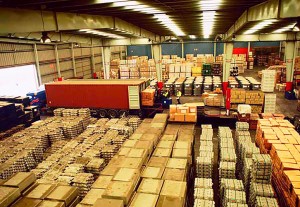Paperwork is one of the biggest headaches that affect importers and exporters when making your shipments. This article is going to look at what customs clearance is and what we can do to speed it up as much as possible, preventing being affected by inspections and delays.
What is customs clearance?
Customs clearance is the set of requirements and formalities related to the entry and exit of goods from a particular national territory, to control and approve this movement. It process is based on the declaration of information related to commercial operations to the customs authority.
The person in charge of performing this procedure is known as a customs agent, a qualified professional that will make the declaration on behalf of the importer or exporter, to the competent customs authority in each case. This person also provides data on the characteristics of the goods and of the agents involved in its shipment and reception.
Required documents for customs clearance
What kind of information is required to process customs clearance? This depends on the operation, the type of transport and the classification of our shipping.
Here are some of the most common documents that we could be asked for:
- Purchase invoice sale for the goods: This will be our way to prove that a legal commercial transaction has taken place.
- Bill of Landing: The Bill of Lading is a document that serves both as a contract of carriage and as reception for the goods on the ship. It is important to remember that documentation varies depending on the type of transport. Other means of transport will require a similar document such as the Carriage of Good by Road (CMR in Spanish) or by Rail (CIM in Spanish).
- Packing list: This is a list of content that focuses on details such as the description, weight and amount of goods, the number of packages or packets, as well as their numbering and shipping marks
The 4 customs channels or circuits
Whenever there is a request for goods to undergo customs clearance, the customs authority assigns an entry circuit. This assignment will depend on several factors such as the origin and destination of the goods, the history of the exporter or importer, the fact that this involves an operator with AEO certification (Authorised Economic Operator) or even randomly, since random checks also take place.
Green channel
Or immediate clearance. Being assigned the green circuit means that we have submitted our documentation correctly. While being assigned this channel is faster, this does not rule out being asked for extra documents or more information later on. Goods can exit or enter the country without a problem.
Yellow channel
This is a relatively new channel that is used to indicate that a certain type of non-customs services certificate has not been attached to allow the goods to be cleared.
Orange channel
This is the channel for reviewing documentation Entering the orange circuit means that the authorities need to check that the details that we have declared and our documentation are correct. We are likely to be asked certain extra documents, such as the dual-use letters. The goods shall be retained in customs until this new documentation is delivered, but once the review is positive, the goods are dispatched.
Red channel
The red channel involves a physical review of the cargo. In other words, apart from looking at the documents, the customs authority will bring our container to a border inspection point (PIF in Spanish); to check that the details of our declaration match the cargo Being assigned the red circuit may involve significant delays as well as involving us having to pay any costs arising from the inspection. This is a headache for importers or exporters that should be avoided at all costs.
In order to provide bureaucracy holding up your shipping, let us take charge of your customs clearance. Bilogistik facilitates the management of all port procedures through our customs agents. Our knowledge of the different types of goods and regulations allows us to provide an agile and transparent service, avoiding any type of delay due to fiscal issues, regardless of the transport type.


